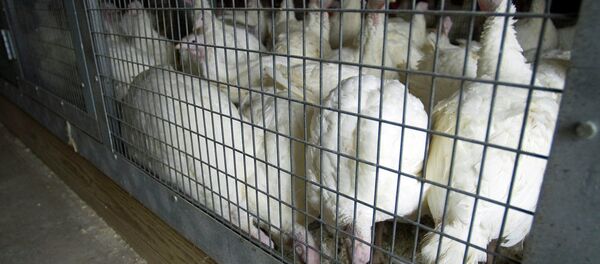The new cases of highly-contagious H5N2 raise the infected bird toll to 1.1 million since the outbreak began.
In North Dakota’s Dickey County, the strain affected a flock of 40,000 turkeys, according to State Veterinarian Susan Keller.
Officials from both states say the turkeys not killed by the virus will be euthanized to prevent the disease from spreading.
The loss of Turkeys in Minnesota has cost about 1.9 percent of the state’s annual production, according to Minnesota Agriculture Commissioner Dave Frederickson.
"For these companies, and obviously for the farmers and their families that have been impacted by the H5N2 virus, there are some really difficult times ahead," Frederickson told AP.
However, officials maintain the threat to public health is low and the virus poses no threat to the food supply. So far, no human case of H5N2 has been detected in the U.S., according to Dr. Joni Scheftel, state public health veterinarian with the Minnesota Department of Health.
Some suspect that ducks and other migrating birds could have spread the disease in the barns through their droppings. However, the Minnesota Department of Natural Resources has found no wild birds with H5N2 in their droppings thus far. The department is expecting test results of samples taken from farms in three counties by next week, according to Wildlife Health Program Supervisor Michelle Carstensen.
H5N2 can also be spread by workers or by rodents that sneak into the barns.
Scientists are trying to figure out how the virus managed to bypass biosecurity practices which are “top notch,” according to Dr. Beth Thompson, assistant director of the Minnesota Board of Animal Health.
Thompson suggests that the virus may recede as the migratory period ends and warm weather approaches, because the virus prefers cold and wet conditions.



